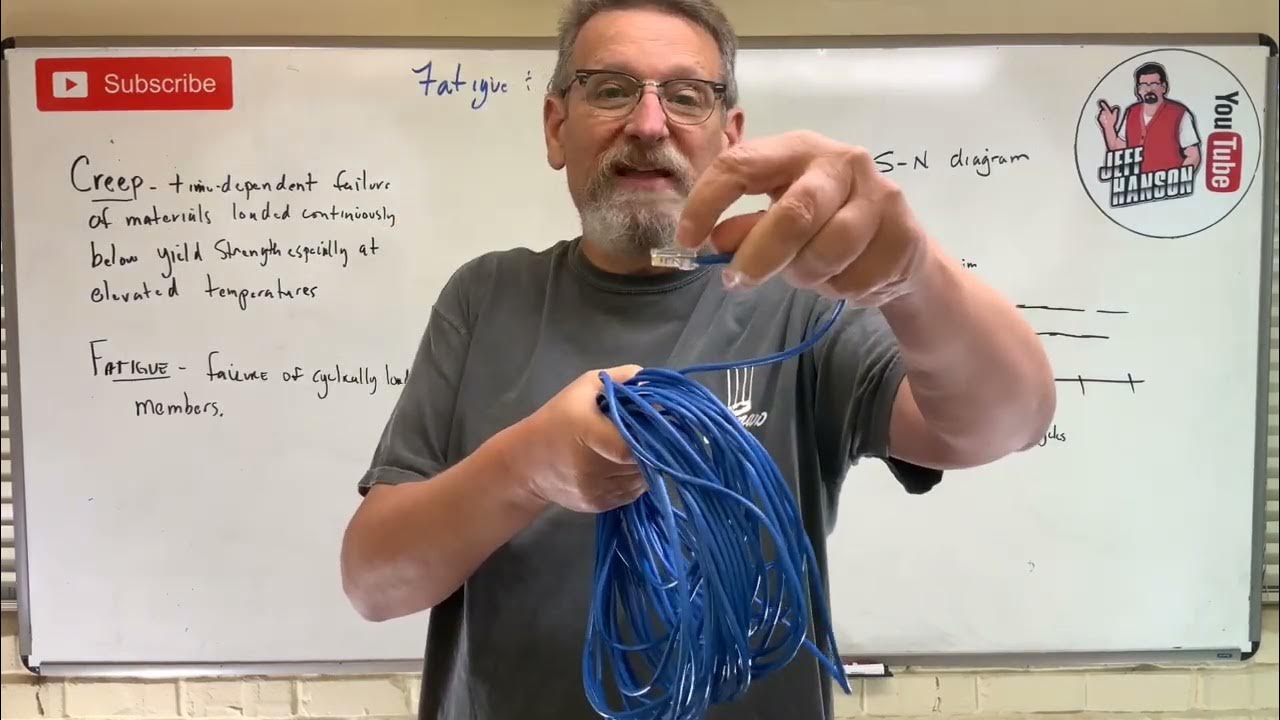Analisis Kegagalan Logam: Modul 1 Segmen 4 (Pertimbangan Keamanan dari Kegagalan)
Summary
TLDRThis video discusses key failure phenomena in materials engineering, focusing on fatigue, corrosion, impact loading, and overload. The speaker emphasizes how these failures impact safety in engineering designs. Fatigue failures are dangerous due to their rapid and often hidden progression, as illustrated by the 1980 sinking of the Alexander platform. Corrosion is more gradual and predictable, making it less dangerous. Impact loading and overload failures happen suddenly, often due to design flaws or human error, posing significant risks. The video underscores the importance of understanding these failure mechanisms for ensuring safety and preventing catastrophic outcomes.
Takeaways
- 😀 The script discusses the phenomenon of metal failure and safety considerations related to different types of failure.
- 😀 There are four types of failure phenomena: fatigue, wear, corrosion, and impact/overload, each with distinct characteristics.
- 😀 Fatigue failure is characterized by undetectable cracks on the surface, which grow gradually due to repeated loading, making it a dangerous failure type.
- 😀 A tragic example of fatigue failure is the 1980 sinking of the Alexander platform, which caused 123 deaths due to undetected fatigue cracks.
- 😀 Wear and corrosion are more gradual phenomena that can be observed and do not pose immediate catastrophic risks.
- 😀 Wear is a mechanical action that gradually reduces the thickness of a material, while corrosion occurs due to the interaction of metal with its environment.
- 😀 Corrosion includes types like general corrosion, galvanic corrosion, and others, which develop slowly and can be predicted, making them less dangerous in the short term.
- 😀 Impact and overload failures happen suddenly and without warning, posing significant risks, often due to design errors or human mistakes.
- 😀 The script highlights the importance of recognizing the risks associated with each type of failure, especially those that occur without warning.
- 😀 The final message emphasizes the need for awareness of potential failures and the importance of vigilance in preventing them from occurring.
Q & A
What are the four types of failures discussed in the video?
-The four types of failures discussed are fatigue, corrosion, impact load, and overload.
How does the failure mechanism of fatigue occur?
-Fatigue failure occurs through the gradual growth of microscopic cracks due to repeated loading. These cracks propagate with increased stress and frequency, often leading to catastrophic failure.
Why is fatigue failure considered dangerous?
-Fatigue failure is considered dangerous because it can cause catastrophic failure without warning. The cracks are not visible on the surface, and the failure occurs rapidly under specific loading conditions.
Can you give an example of a real-world disaster caused by fatigue failure?
-Yes, an example of a fatigue failure is the sinking of the Alexander Platform in 1980, where undetected fatigue cracks led to the platform overturning, causing the death of 123 workers.
What distinguishes corrosion from other failure types?
-Corrosion is a gradual failure process caused by the interaction between a metal and its environment, typically appearing as visible surface damage. Unlike other failures, corrosion does not lead to sudden failure and is considered less dangerous.
What are some common types of corrosion mentioned in the video?
-Some common types of corrosion mentioned include uniform corrosion, galvanic corrosion, and other forms of surface corrosion that occur over time.
How does overload failure differ from other types of failure?
-Overload failure occurs suddenly and without warning, often due to excessive force or stress that the material cannot withstand. It is typically caused by design errors or human mistakes.
What is the main characteristic of impact load failure?
-Impact load failure happens abruptly, without any prior warning, and is very dangerous because it results from a sudden event or force, often leading to catastrophic consequences.
Why is gradual growth important in considering the safety of materials?
-Gradual growth of failure mechanisms, like corrosion, is important because it allows for detection and preventive maintenance. In contrast, sudden failures, like overload or impact, are harder to predict and can be more hazardous.
What lesson does the video impart regarding material failure?
-The video emphasizes the importance of being aware that material failure can occur suddenly or gradually. Engineers must be vigilant and consider safety factors to prevent disasters and ensure the integrity of structures over time.
Outlines

此内容仅限付费用户访问。 请升级后访问。
立即升级Mindmap

此内容仅限付费用户访问。 请升级后访问。
立即升级Keywords

此内容仅限付费用户访问。 请升级后访问。
立即升级Highlights

此内容仅限付费用户访问。 请升级后访问。
立即升级Transcripts

此内容仅限付费用户访问。 请升级后访问。
立即升级5.0 / 5 (0 votes)






